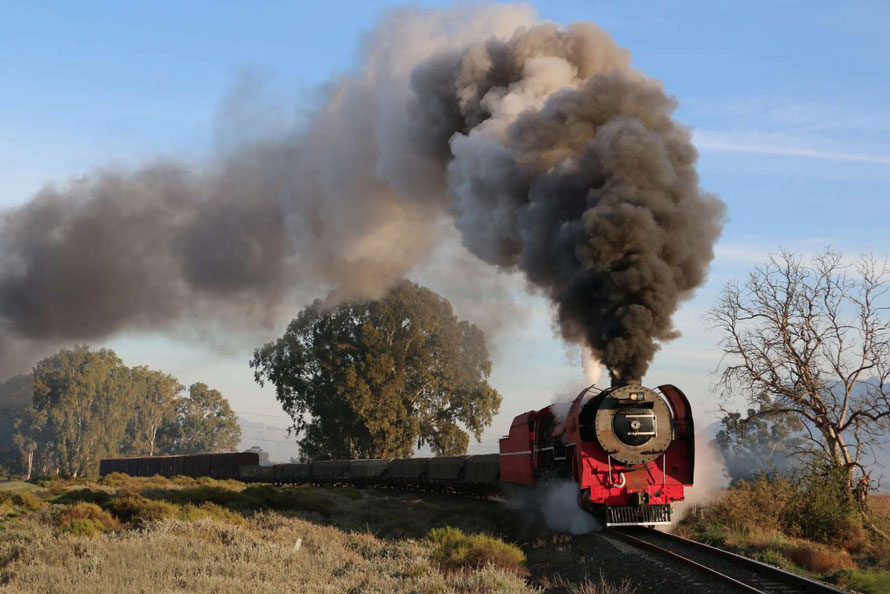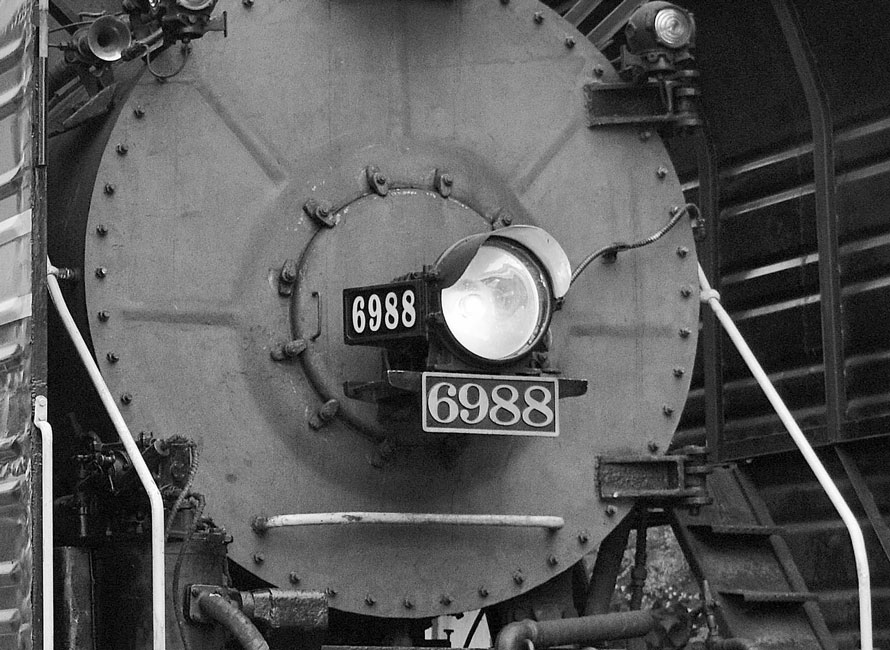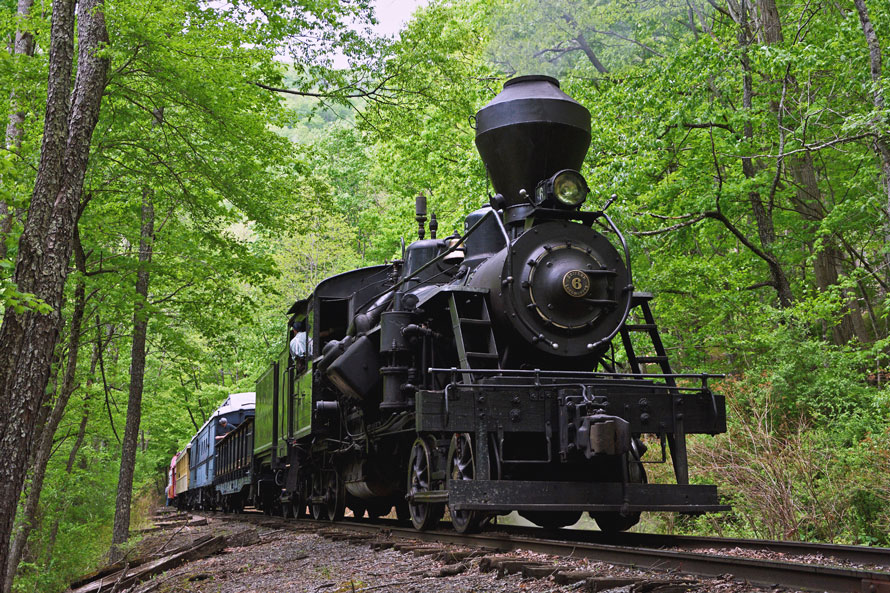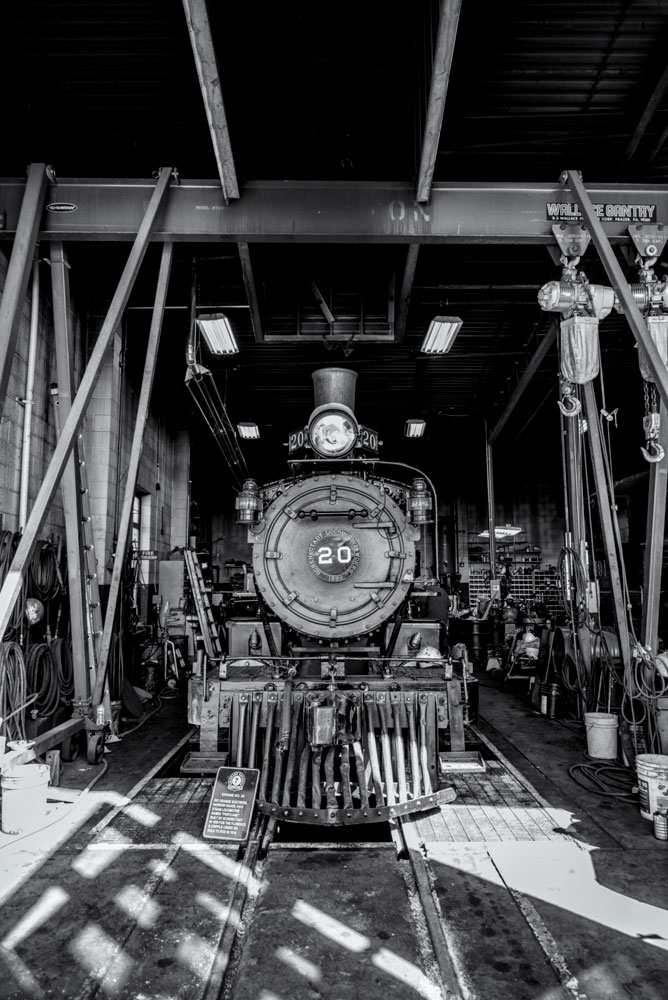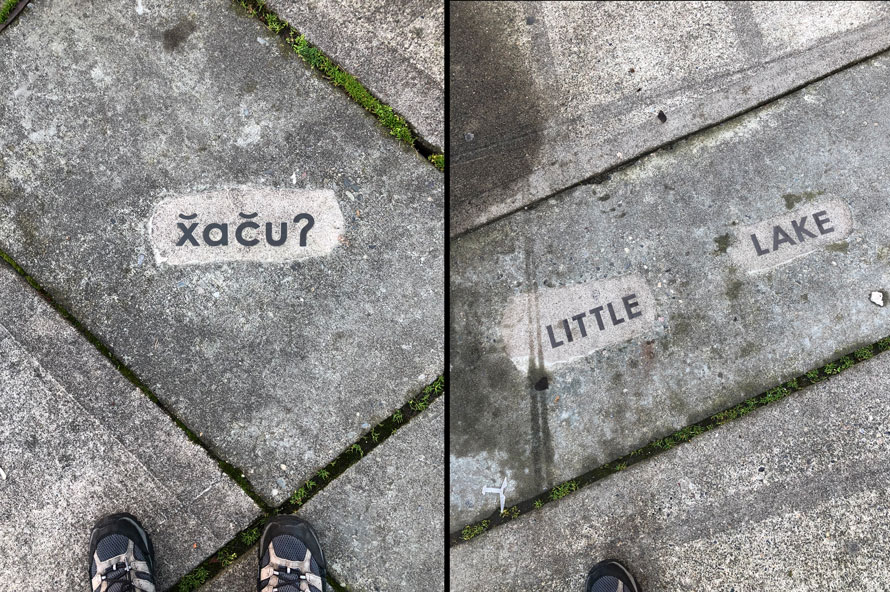A South African Adventure – Part Two
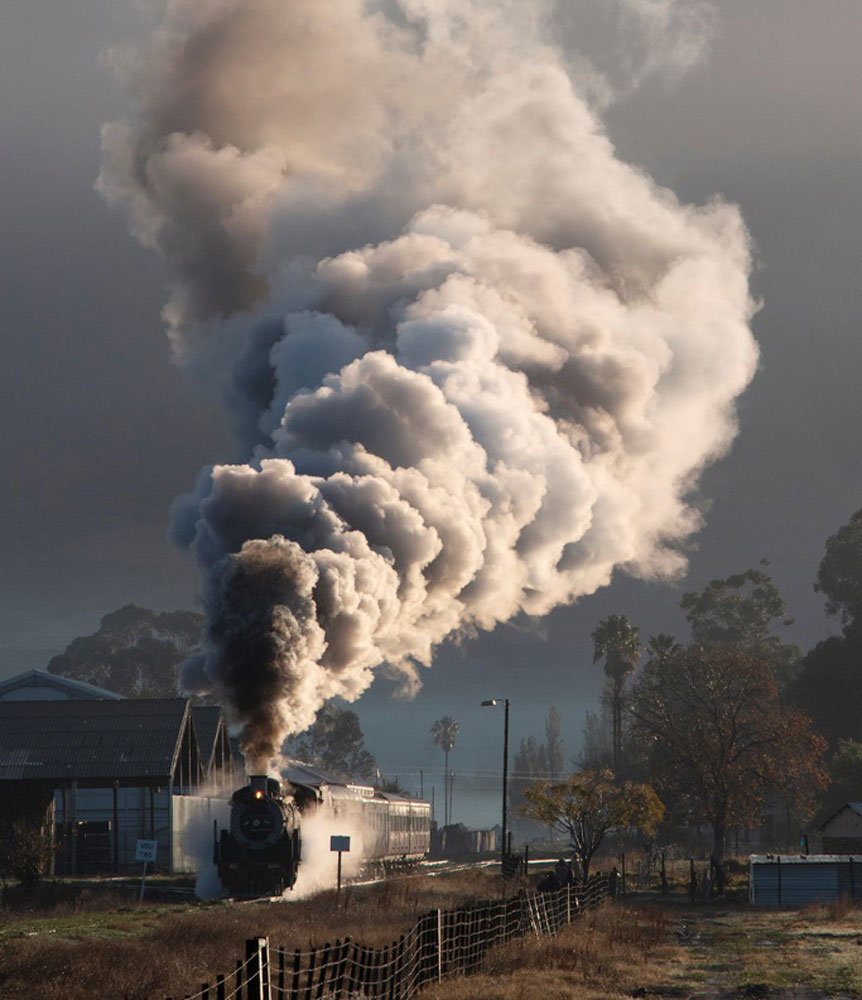
South Africa locked down for COVID-19 in March, 2020 with very little warning. Yes, the rapidly growing pandemic was global news, but up to then South Africans still saw it as something distant and remote – it was generally felt that the virus would by-pass us here and that life would continue as normal. Most of us underestimated what was in store.
Ceres Rail were planning trips into April and May and were still running trains, but on the evening of Sunday 15th March 2020, the South African president announced that the country would be in full lockdown by Friday 20th. All public events, traveling and social gatherings were totally banned. Ceres Rail had no choice but to cease operations immediately.
The company was forced into survival mode. A core group of personnel were still retained to mothball and maintain equipment, but all volunteer staff were laid off, and heavy repairs on locomotives was stopped. A big unknown was that nobody knew how long the lockdown would last. It was impossible to plan a future where there was no timetable! There were occasional glimmers of hope as the infection rate dropped and regulations were relaxed, but then the rate would spike again and regulations would be re-introduced. The situation limped along from month to month and then into the following year.
And somehow, Ceres Rail survived.
It was only in September 2021 that regulations were comprehensively lifted and Ceres started preparations for a return to service. The first step was to finish off shop work on their 19D No. 3322. The locomotive had gone in for boiler repairs just after the end of the 2019 FarRail tour. This had progressed steadily during the remainder of that year and the beginning of the next before COVID had put things on hold. Now it was time for completion and to obtain the necessary boiler certification. A number of passenger cars were also checked and road-certified as well as being spruced up, both internally and externally.
Another task was to re-qualify personnel. For some, operating Rules & Regulations had to be re-studied and exams written. All returning volunteers underwent refresher training. In addition, some COVID regulations were still in place, so everyone had to be instructed on how to deal with the restrictions that were still imposed. It was a busy time for the Ceres team.
One large hurdle still remained. During the pandemic, rail services in South Africa had been almost fully shut down and the railroad infrastructure was left unused and unsecured. As a result, it had been looted extensively – overhead electrification wires and signal cables had been stolen by scrap thieves and even rails and overhead masts had been removed on some lines. Some double track routes became single lines. The lines on which the excursion trains were to travel would have to be certified as safe-to-run by Transnet (the national operator) before operations could commence. But fortunately, the route that Ceres Rail would use had continued running freight services during the shutdown and the line was automatically OKed for Ceres operations.
The first passenger excursion ran in mid-November 2021 and a very successful Christmas vacation season followed. Despite worries of another pandemic spike, trains were well filled. Capetonians and our other visitors wanted to forget the last dark 18 months, and what better way than to get out and enjoy oneself than on a steam train trip!
News of the Ceres relaunch filtered through the international rail-enthusiast grapevine. They were approached by a private German group who were planning to come to South Africa in June to tour other local steam lines that had restarted operations. Some of this group had been on the 2019 tour and were awed by the scenery of the sixteen-mile Ceres branch. Would Ceres Rail be able to offer an exclusive two-day photo-charter on the line? Yes, most definitely! 19B No. 1412 was in storage at Ceres along with a number of passenger cars. These could be made available, so there was no need to move any equipment and costs could be kept low. An itinerary was worked out, which after a few revisions, met their requirements. A price was quoted and accepted.
The renewal of Cape Town tour operations and news of the German visit also attracted the attention of the local railfan community. A Johannesburg-based events company, Stimela Photographic Events (Stimela is the indigenous South African name for a train, borrowed onomatopoeically from the word “steam train’’) then wanted to hire the same train for another two days. It made sense to schedule the two events back-to-back. Their dates were confirmed and suddenly we had a four-day mini-railtour on our hands! (But at least we were not traveling any great distances this time)
By the beginning of April, the German party had paid their deposit and serious preparations started. Unfortunately, it was just over three years since No. 1412 had been shopped and her boiler certificate had recently expired, so an extension to this was needed. But she was known to have a good boiler and had been well maintained during her time in storage and she passed the exam with no issues. Passenger cars at Ceres, already in the traditional South African Railways red and grey livery (thus no painting required), were selected and underwent mechanical inspection and were cleaned up. The line itself was re-scouted for photo-locations, obstructing vegetation identified and gradually trimmed back. All that was required was to hire a few freight wagons from Transnet to make up a respectable looking consist for the four days. Everything looked good and excitement in the Ceres camp was mounting!
On 11-13 April, heavy flooding and landslides struck the South African province of Natal, causing the death of 448 people and destroying over 12,000 homes. There was major damage to infrastructure, including that of the two lines which were to host the Germans for the balance of their tour. Both operations suffered severe wash-aways with no chance of repairs being carried out in time. The group were now in the unhappy situation of having confirmed and paid for their airfares, but only having only two days of steam for their tour. Could we do something extra? Combining with the Stimela group for their two days was a logical step and the idea was accepted by both parties immediately. But, this still left another day free. Was there anything else that could be suggested? A day trip from Cape Town to the town of Malmesbury (the same route of the first day of the 2019 FarRail tour) with 19D No. 3322 was proposed, but with the caution that this was on an operating Transnet line. A formal application would have to be made to them, and approval could take some time…
As it turned out, Transnet were “on their game” and approval and, more importantly, a cost for access to their line was confirmed within two weeks. A quote for this leg was calculated and was accepted by the Germans. Now the original two-day event had morphed into five days on two different lines! This was becoming interesting.
Bookings with the Stimela group were progressing nicely and income from passenger numbers was reaching a point where Ceres felt that the original offerings to both groups could be improved. They would transfer 19D No. 3322 from Cape Town to Ceres for the tour dates. Apart from adding variety to the locomotive mix, this addressed a number of other issues:
- No. 3322 would be a standby locomotive in case of any unforeseen problems with No. 1412
- A double-heading combination would now be able to be offered to both groups on one of the operating days
- Running a train from Cape Town would allow the transfer of personnel accommodation and tool cars
- The freight cars on hire from Transnet would originate from Cape Town, which would be easier to arrange than having freight cars delivered locally to Ceres by Transnet
The additional costs of running No. 3322 from Cape Town were to be covered by selling tickets to the public and returning them to Cape Town by road coach. A similar arrangement (mirrored) allowed Ceres to return the train to Cape Town the following weekend.
The plan was now:
- Thursday & Friday (16th & 17th June): Two days on the Ceres branch with the 19B for the German group
- Saturday (18th June): Double-headed 19B + 19D on the Ceres branch for the combined German and Stimela groups
- Sunday (19th June): Morning on the Ceres branch with the 19D for the combined groups. Return to Cape Town on the train with the 19D in the afternoon for the Stimela group
- Monday (20th June): Day charter from Cape Town to Malmesbury and return, with the 19D for the German group. Some of the Stimela group would join this leg by pre-arrangement
As with the FarRail 2019 tour, we had no shortage of volunteers wanting to join us for operations. All in all, over the five days, there were eleven volunteers and six permanent personnel that kept the train running.
And then, a minor disaster! A week before the tour, our fuel supplier announced that he could not obtain coal for us. The Ukrainian crisis was triggering a shortage and it seemed that South African mines were exporting everything they had. Nobody was interested in sending a relatively small amount to “some steam train guys in Cape Town.” It looked as if we might have to use the (more expensive to run) oil burning 19D for the whole tour.
Then a possible reprieve? A local compressed-wood biofuel supplier offered to supply his ‘coal’ at a good price. This stuff had never been used on a locomotive before and we were quite skeptical about what the result would be, but the supplier guaranteed that it had the same energy content per weight as standard coal, if not per volume. (It weighed less per scoop-full, so our firemen would need to shovel faster. This would even the equation out!). For want of a better option, a load of this was ordered for the 19B.
For better or for worse, we were committed to run with what we had for the next few days.
PREPARATIONS
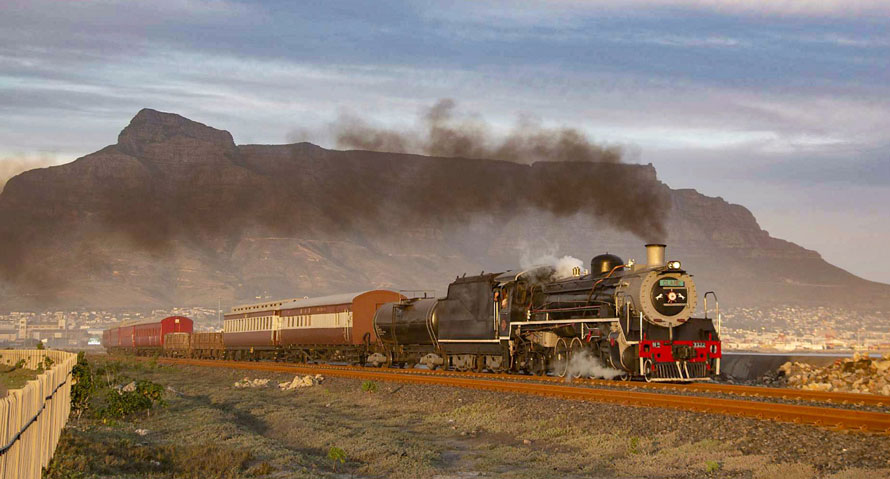
Sunday 12th June 2022
19D 3322 leaves Cape Town with the support train. The first two cars are the crew accommodation and mess cars, then two hired Transnet gondolas. The rest of the train is for the passengers that would return by road coach that evening.
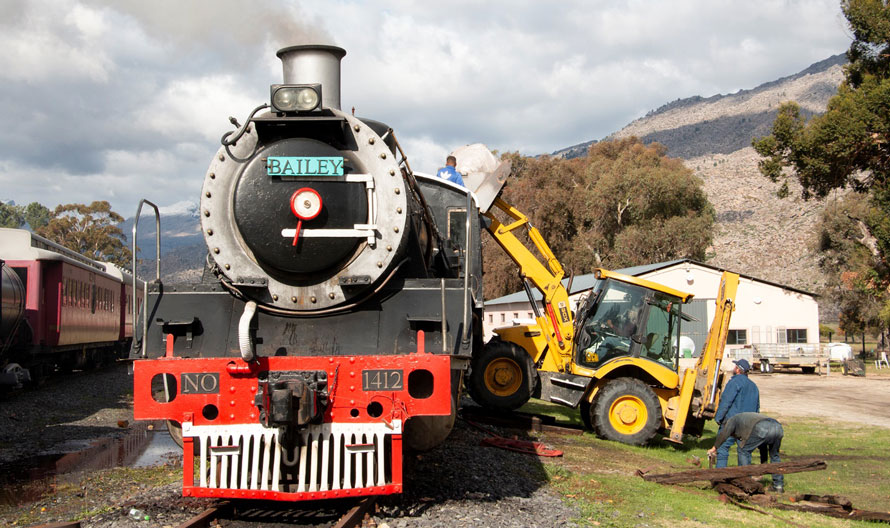
Wednesday 15th June
Loading the biofuel onto No. 1412 (above). The fire had been lit with a mixture of coal and biofuel in the morning. The boiler pressure gauge remained obstinately at zero for a long time, but by 4:00pm was starting to show life and by 5:30 No. 1412 was ready to make up the train for the next day (below). But we still didn’t know if the biofuel would perform well on the open line.
Bailey, by the way, is the name of the son of one of the Ceres Rail directors. It was removed for the tour.
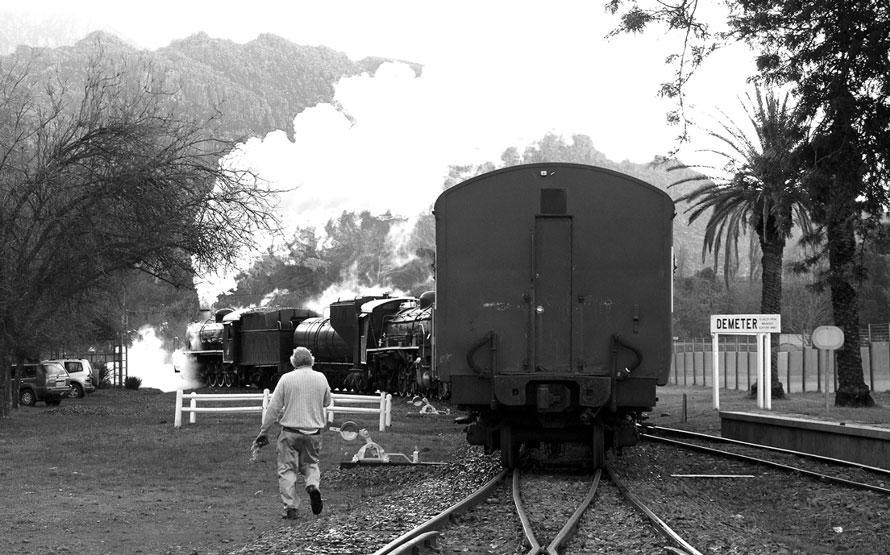
THURSDAY 16TH JUNE
We had met the German group the evening before and they rejoined us early on Thursday. After a quick safety-briefing we set off to Wolseley, the junction for the main line. We would spend the morning on the climb up from Wolseley, and return to base to re-supply the locos (and for lunch). It was planned that we would then spend the afternoon on the northern section of the line to Prince Alfred Hamlet (where the line actually ends).
The morning was spent getting to know the group and their tour leader Stephan. Although we had talked often on the phone, this was the first time we had personally met. Finding out about his photographic style and the group’s likes and dislikes was essential for smooth running of the tour. By lunchtime we had settled down to a working routine. Many photographs would be taken in the next five days!
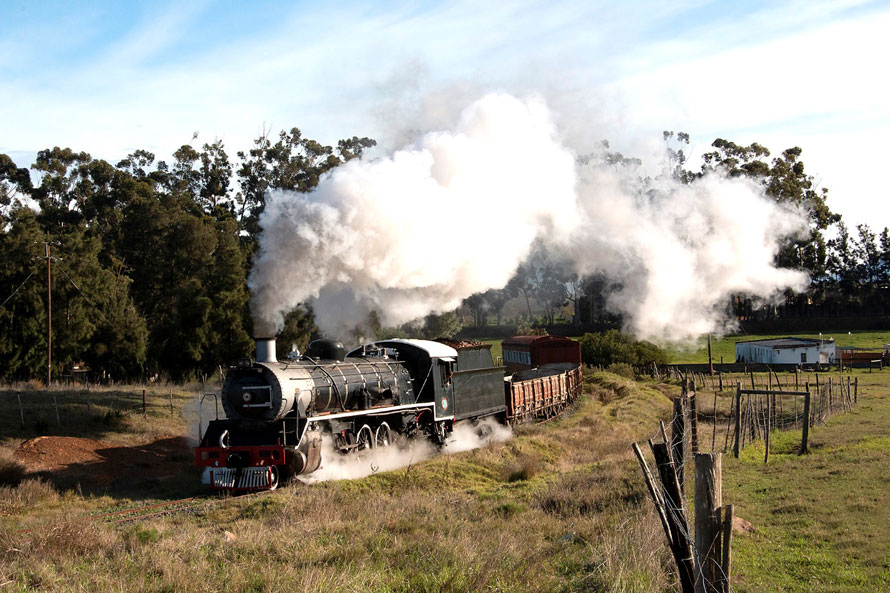
A film-star again after three long years, No. 1412 performs the first runpast of the tour outside Wolseley
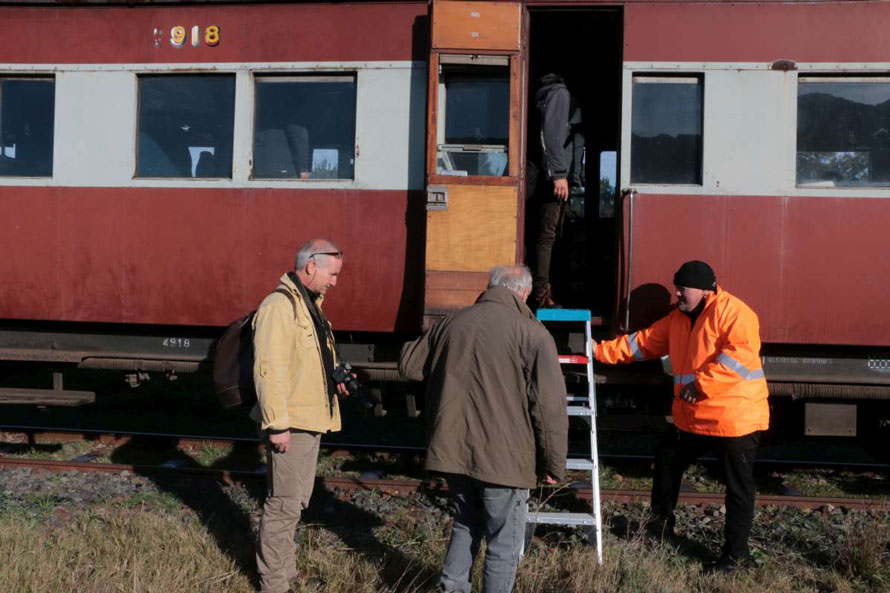
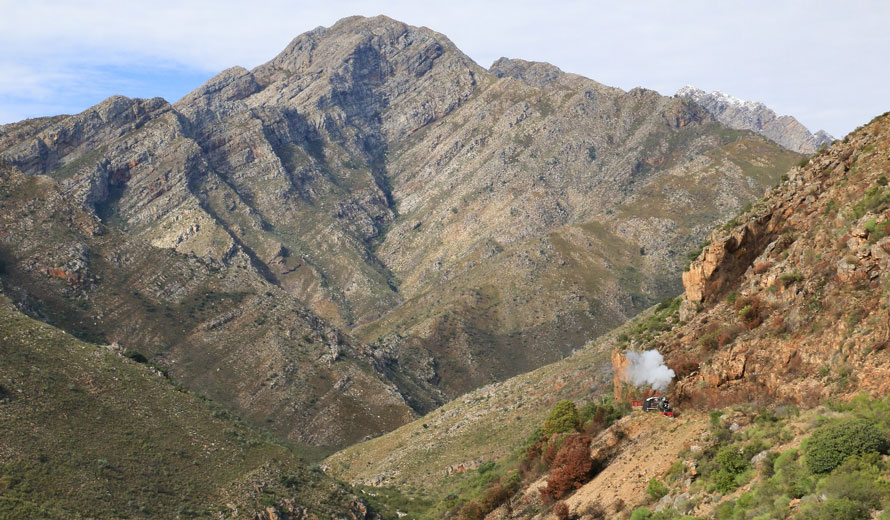
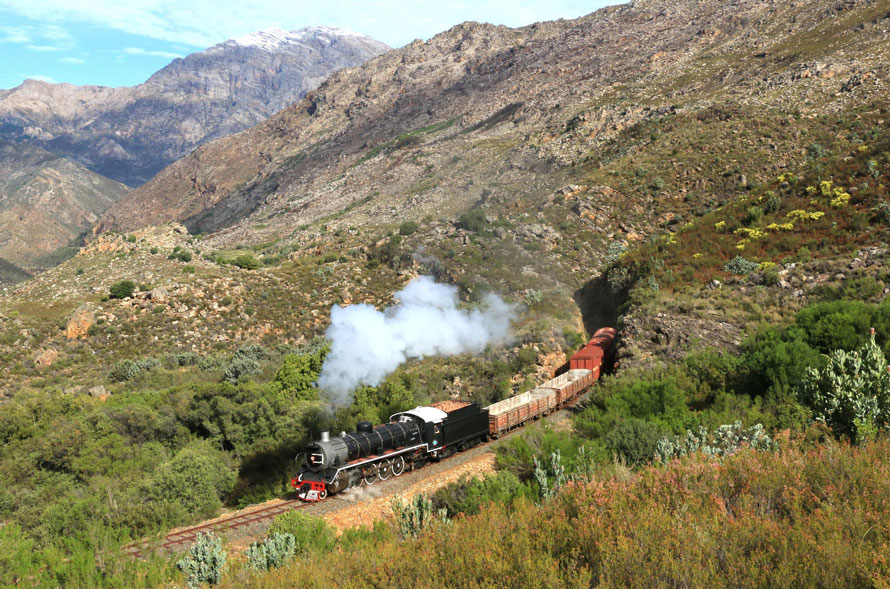
By the afternoon, the tour party had decided that they wanted to concentrate on photography in Michell’s Pass; the northern Prince Alfred Hamlet section would be done later. No problem! We had full occupation of the line for the next four days, we could go where we wanted. So, back down the pass it was for the afternoon!
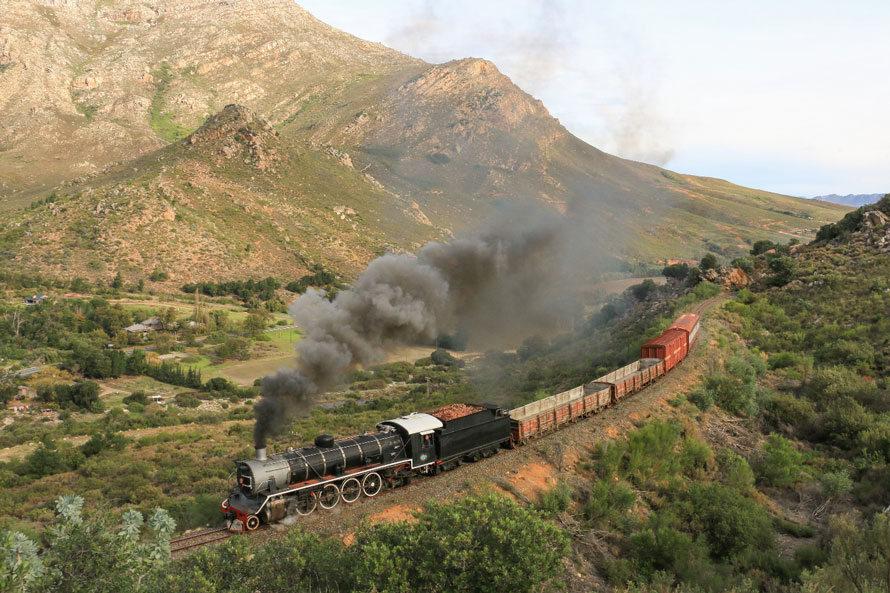
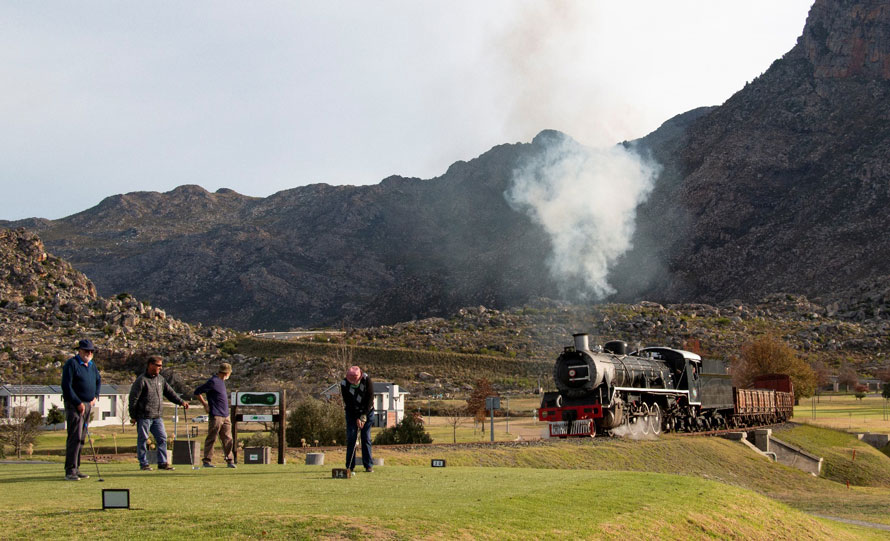
The Ceres line runs through the middle of the Ceres golf course and we persuaded this group of golfers lining up on the 14th to delay their tee-off so we could get this shot. Most golf courses have water hazards – not many have steam hazards…
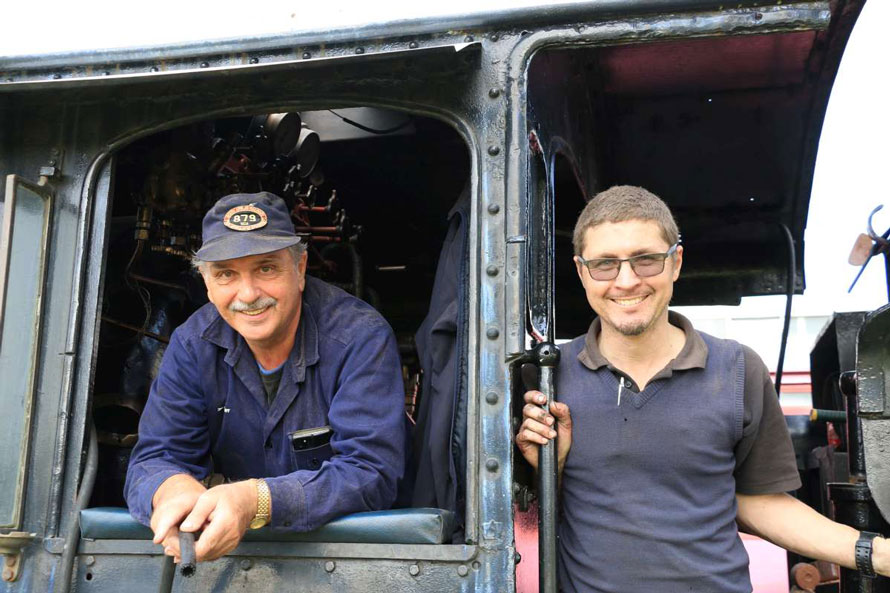
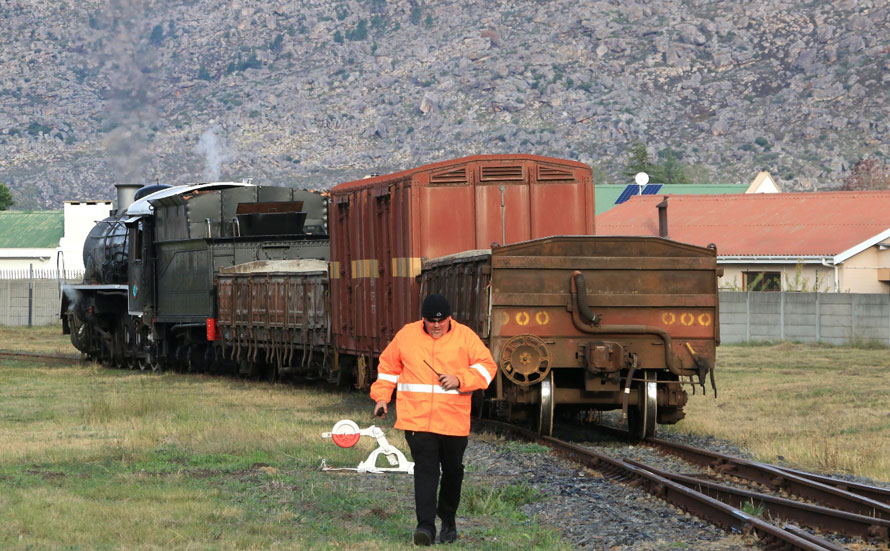
FRIDAY 17TH JUNE
We had planned to repeat a number of photo-locations on Michell’s Pass the next morning, but were advised by Operating (Dispatch) that an extra freight was due and we would have to cancel our run (the Ceres branch is, after all, a working railroad). After some discussion, we arranged that we could reverse our train into the top section of the pass near Ceres for photos and then return to the siding when the freight was ready at Wolseley to come up the branch.
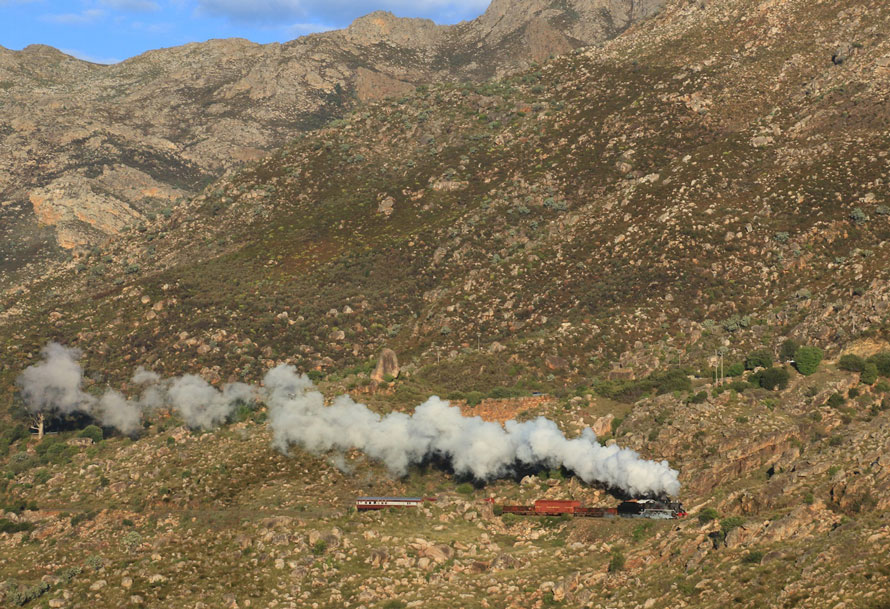
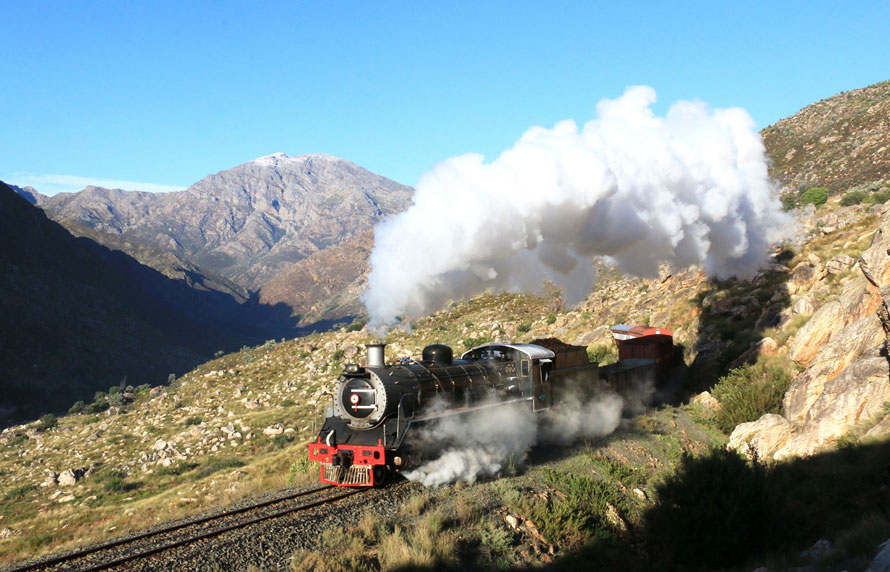
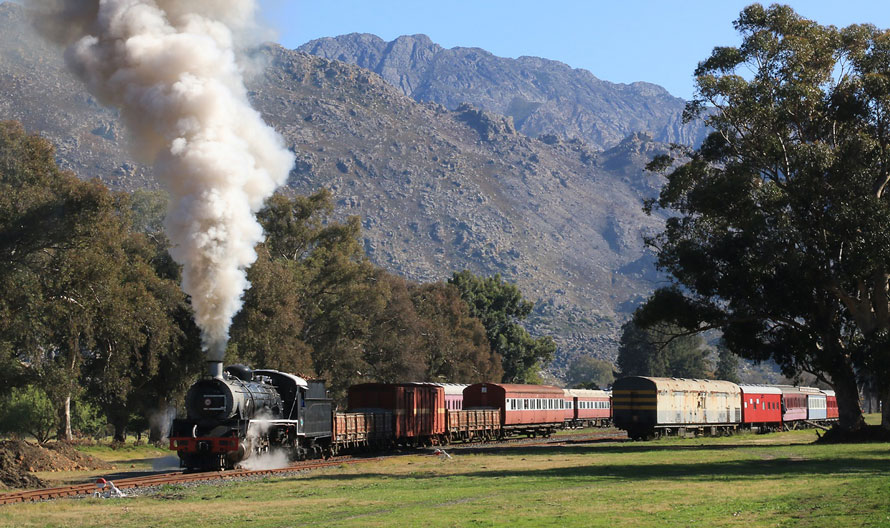
After the freight had passed, we reversed down the pass for a second attempt at some photos that we had not managed in the morning. Only then did we move onto the Prince Alfred Hamlet section of the line and spend the afternoon there. It was the first time in many years that a train had run here and the local community greeted us in full force.
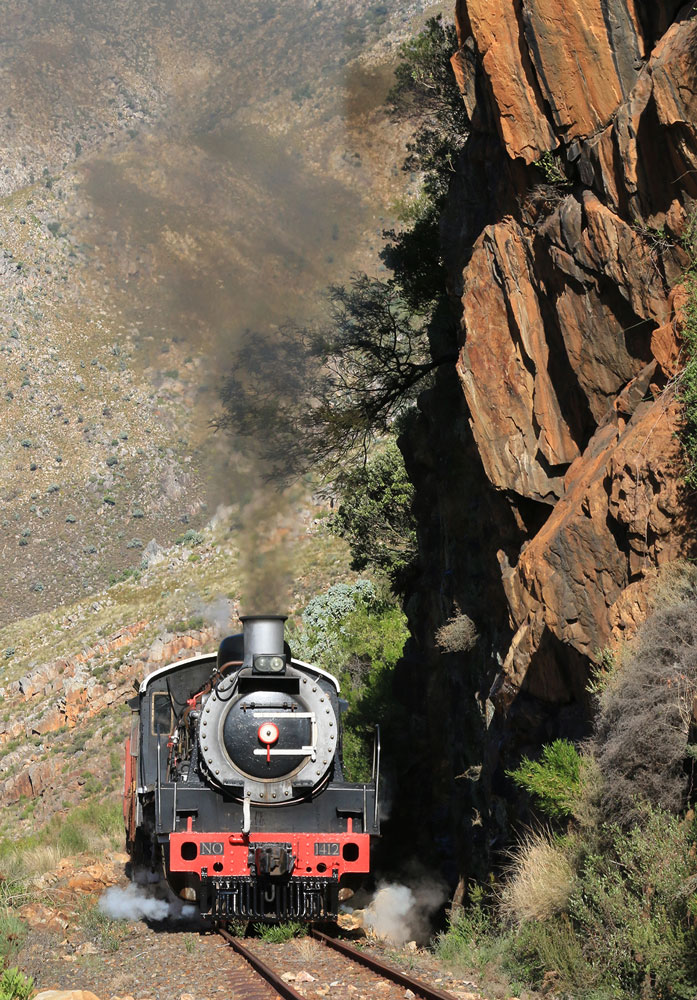
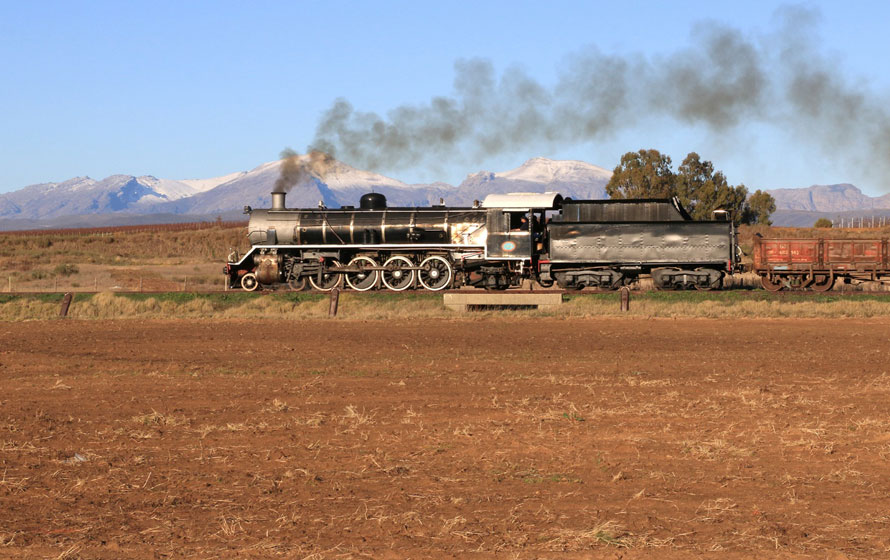
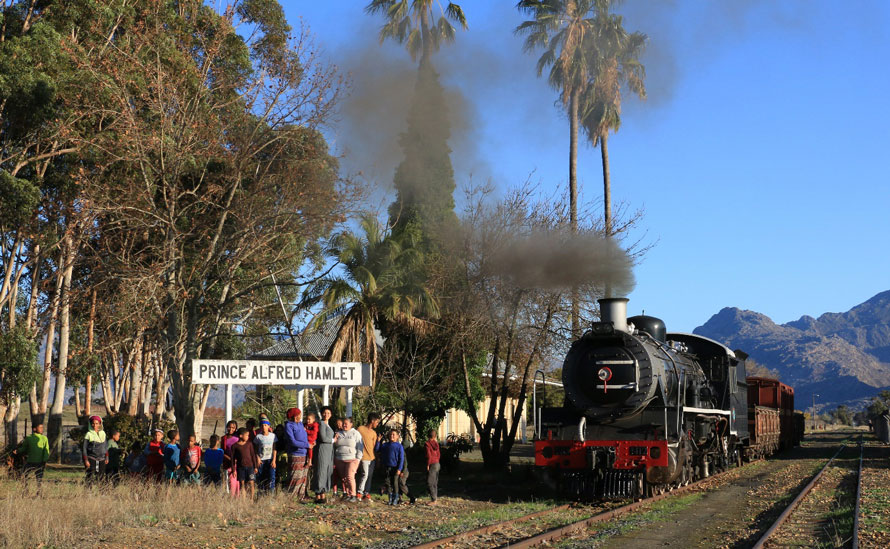
SATURDAY 18TH JUNE
A bad-weather front was approaching and our main concern was keeping the biofuel in No. 1412 dry. It had lived up to the boast that it could generate the necessary heat, but it was not ideal in other ways. Constant vibration in the tender caused it to crumble mostly into sawdust and we knew that if it became wet, it would turn into a thick sludge. A number of tarps were secured in place over No. 1412’s tender—hopefully this was sufficient to keep things dry. As was planned anyway, No. 3322 was also lit up and steam raised overnight. Not a moment too soon, we thought; she would have to deputize on her own if 1412 became inoperable.
It was starting to rain heavily as the German and the Stimela groups arrived at 06:30. We set off for Wolseley with No 1412 and 3322. It was noted that the mountain streams were already running at full spate as we cautiously rolled down the pass. At Wolseley we turned and headed off back up into the mountains. But despite the rain, our passengers’ moods were buoyant. The weather might have been miserable but we still managed to take some great photos that day. And we did manage to keep the biofuel dry!
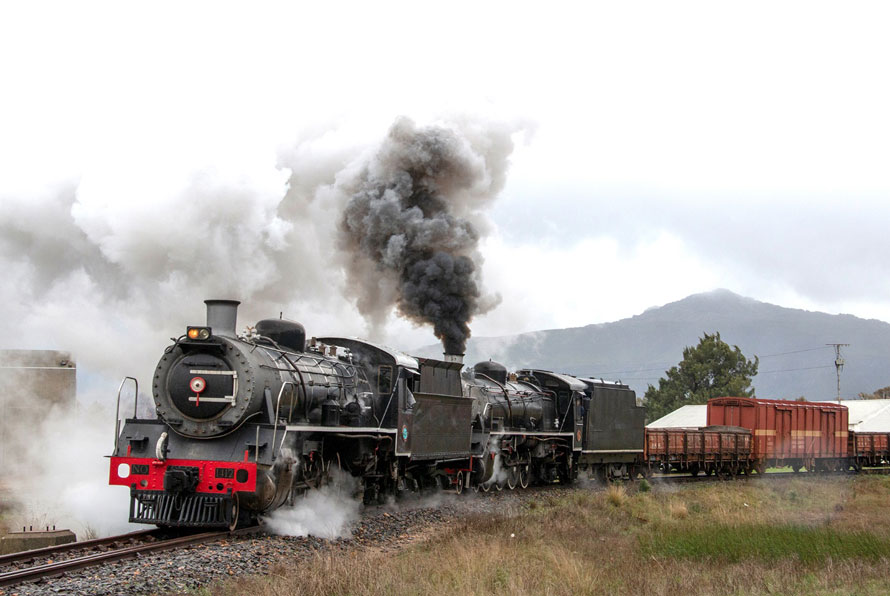
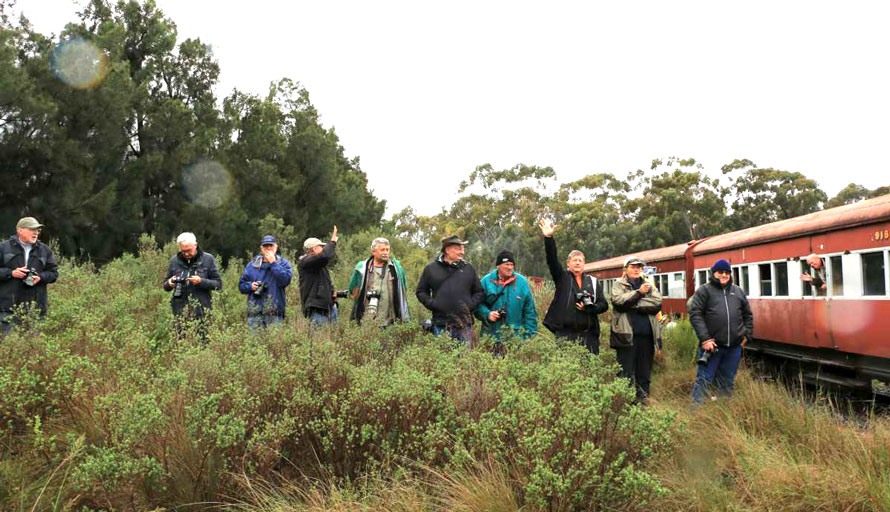
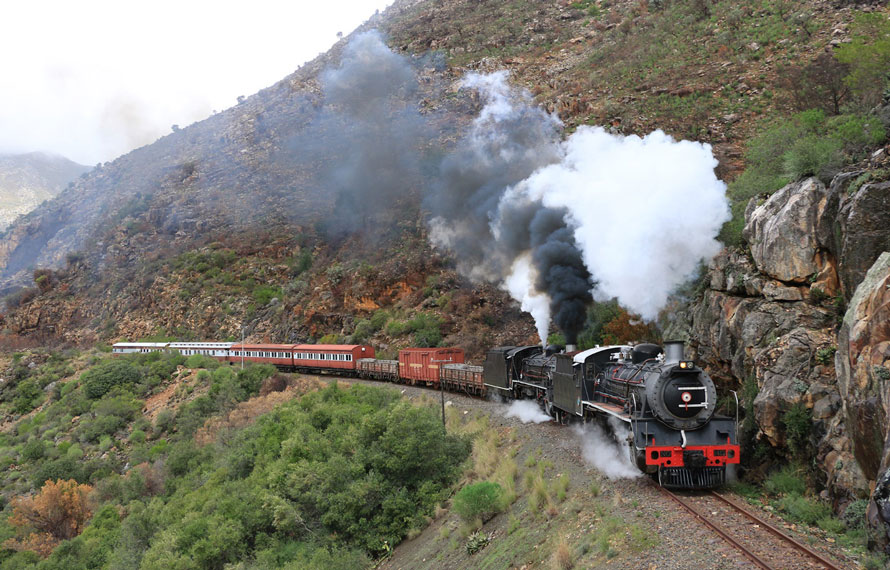
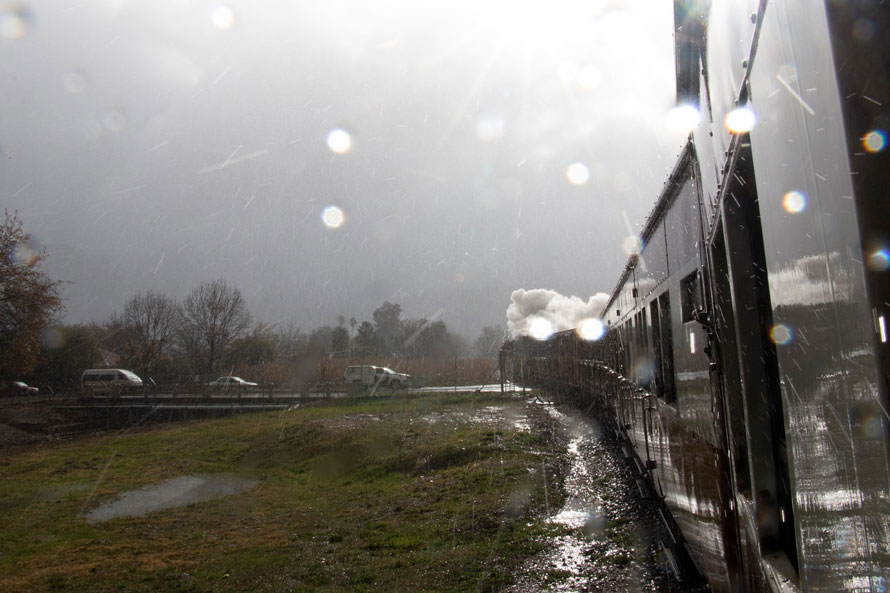
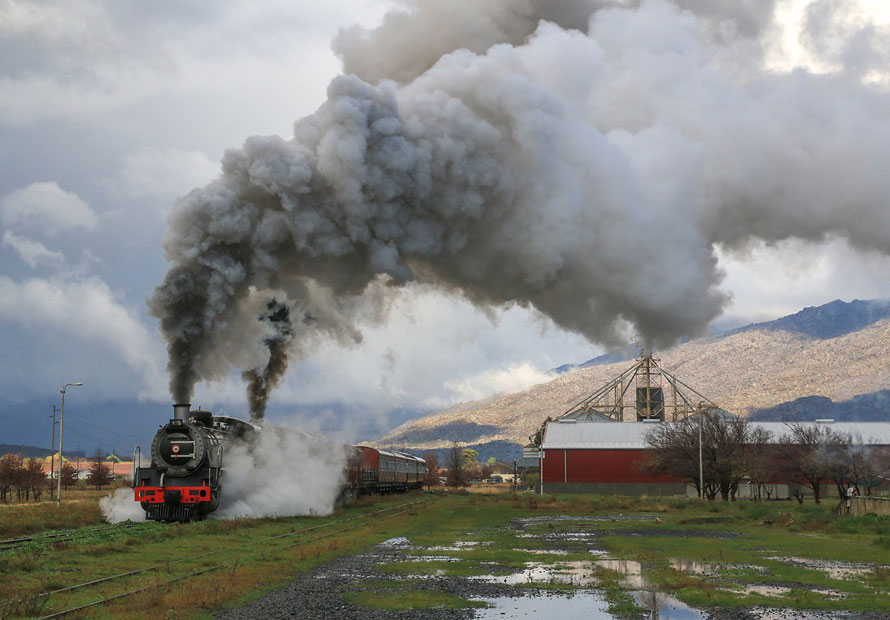
SUNDAY 19TH JUNE
After the bad weather of Saturday, there was concern that Sunday would also be wet, but the morning dawned clear, cold and crisp, perfect for early morning steam photography. The 19B’s fires had been dropped the night before and it was the 19D’s chance to go solo. In the pre-dawn twilight, we set off to Prince Alfred Hamlet with an authentic all-passenger consist. The locomotive ran there tender-first and it was a simple matter to run around and be ready for departure. Then we waited for the sun to peek over the mountains—but not for long!
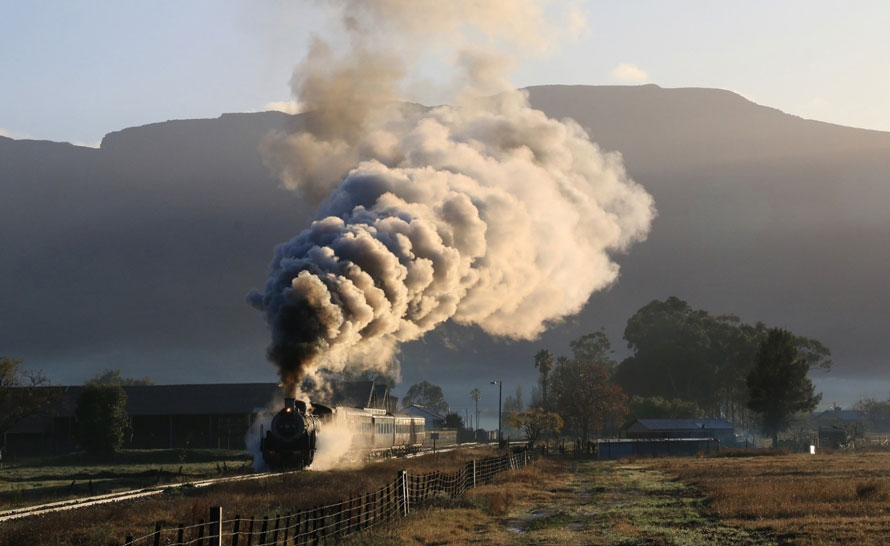
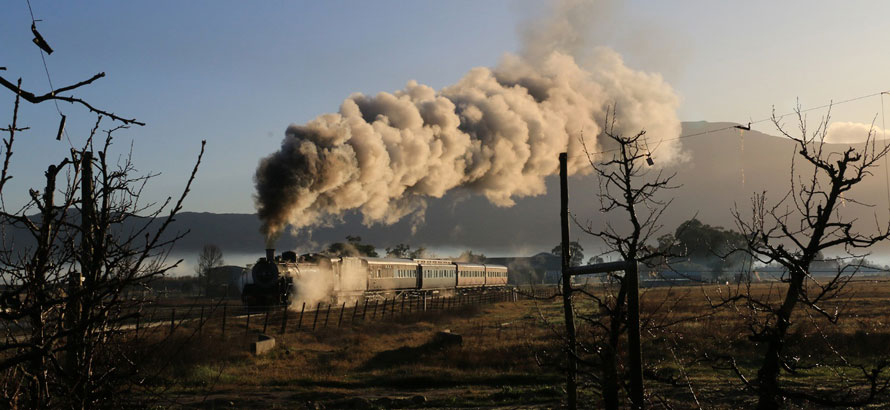
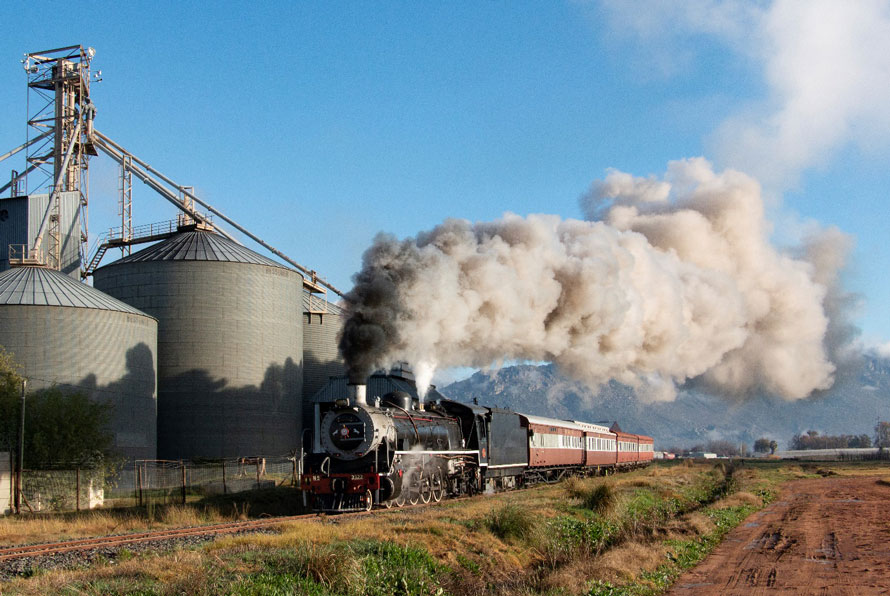
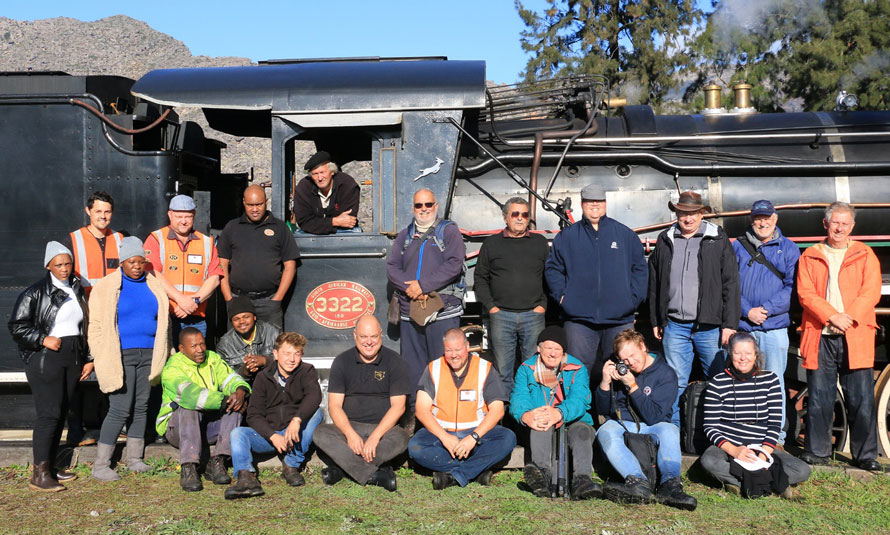
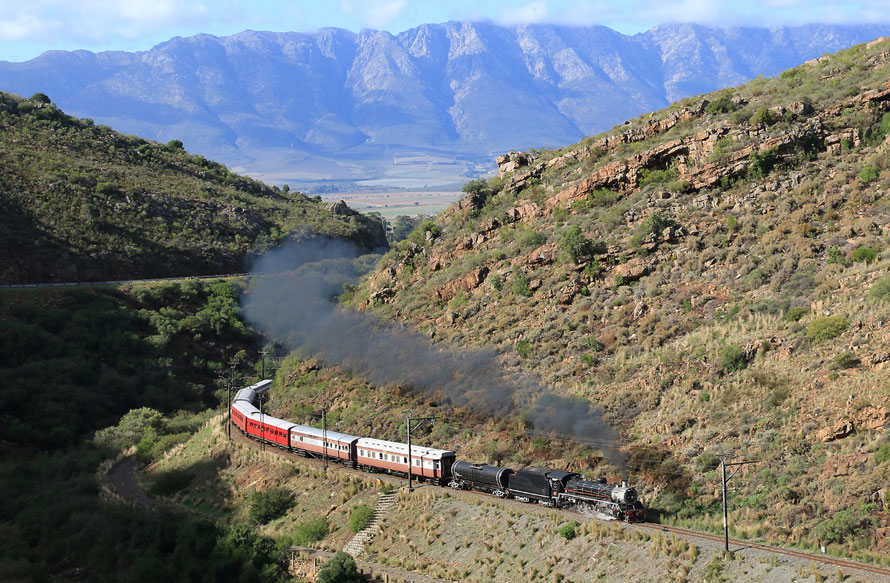
MONDAY 19TH JUNE
The last day of the tour. It was an early departure at 06:00am from Cape Town Harbor, where the train had stabled overnight. Scheduling was all-important here; we had to fit into a path between the Cape Town suburban service trains and if we were late, we could be delayed considerably.
19D 3322 chattered along at a good speed, startling early morning commuters half-asleep on the platforms (“Did I REALLY see a steam train now?”) before branching off onto the Malmesbury (Pronounced: Maalms-berry) line. We virtually had the line to ourselves. There was only one service train we had to take into consideration, and as it turned out, we didn’t see it at all. So, we performed many runpasts.
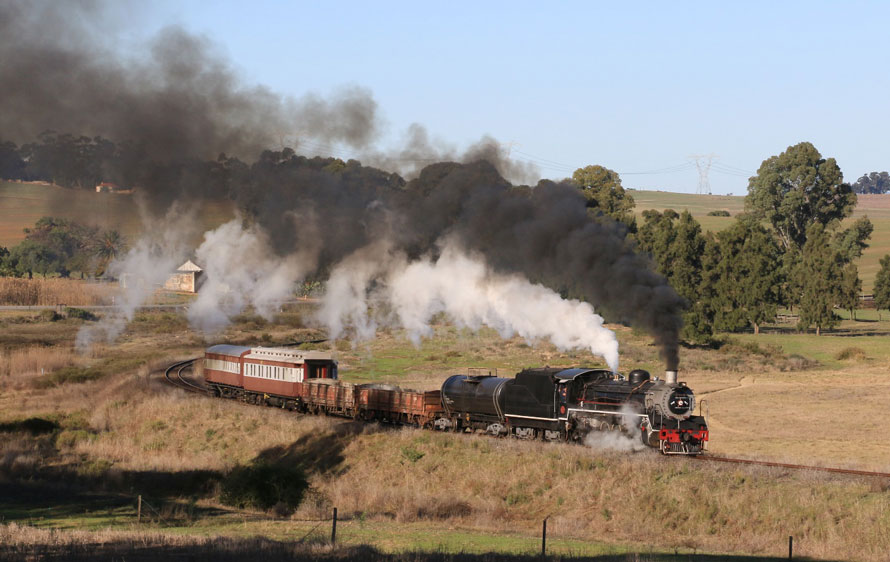
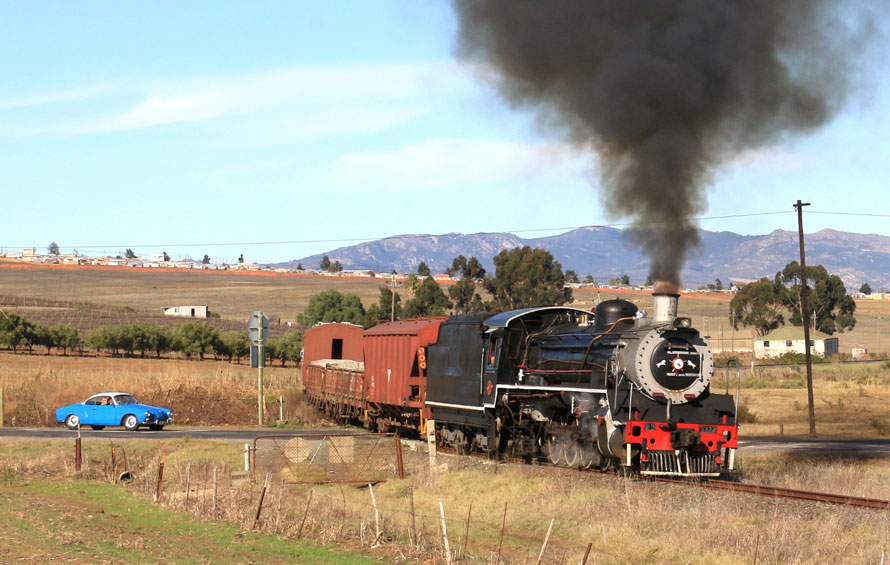
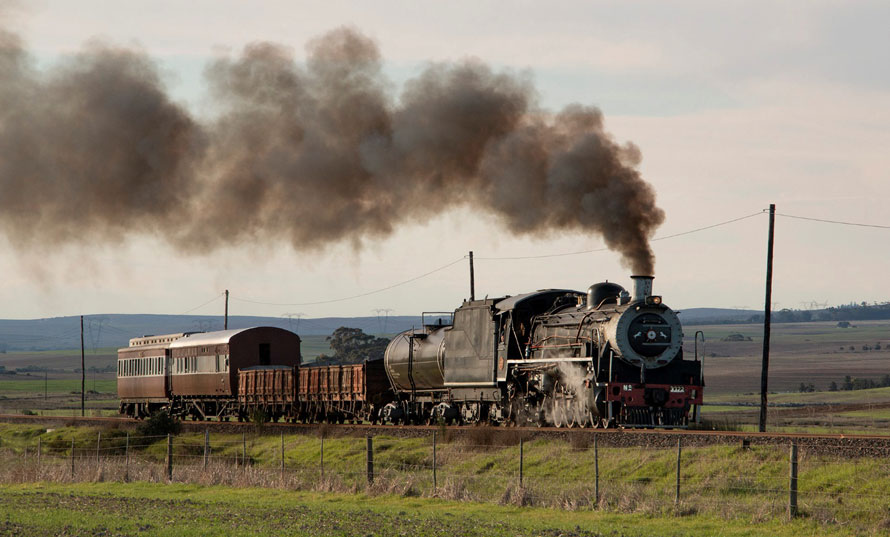
EPILOGUE
Will we do it again? For sure! As long as we can run with steam we will run these trips. The German group and Stimela Photo Events have booked their slots, dates still to be confirmed. Another UK tour operator has shown interest.
Plans are already being drawn up and we are looking at introducing another locomotive and another route to the mix for next year. So, watch this page.
Peter Rogers – Photographs and text Copyright 2022
This is Part Two of a two part story. Click here to read Part One
